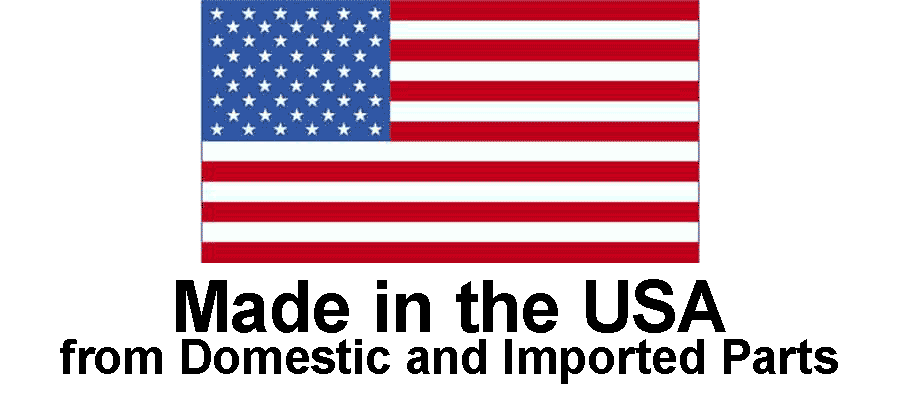
Advancement International Ltd.
595 Circlewood, Aurora, OH 44202(USA)
Email: sales@LugsDirect.com
Phone: 330-562-8983 | FAX: 330-562-9990
 |
Operated By: Advancement International Ltd. 595 Circlewood, Aurora, OH 44202(USA) Email: sales@LugsDirect.com Phone: 330-562-8983 | FAX: 330-562-9990 |
IHIConnectors |
Brumall Manufacturing Corp. |

Greaves Electrical Connectors |
Accepted forms of payment: |
||||||
 |
|||||||||
Maximum or minimum torque?
The rated clockwise tightening torque number on a mechanical lug is an exact torque, not a minimum or a maximum.
Anything less and you risk the wire slipping, or a joint that is not gas tight, leading to overheating from oxides forming, increasing resistance of the connection and joint failure.
Too much torque can damage the wire strands and could damage the lug itself from excess stress and lead to the same conditions as too little torque.
Using a torque wrench is the way to go, and remember to hold the correct rated torque for 5 seconds to be sure the connection has settled in (to eliminate creep relaxation).
Use the agency Label:
ALL wires need to be tightened to the screw torque on the label for that gauge of wire and wire stranding class solid, B & C stranded (NEC "code wire") or G, H, I, DLO, K (FLEX stranded) and material (copper or aluminum).
Never torque less than the torque on the label.
Use only the clockwise torque number:
Only clockwise torque (right hand thread screws) is relevant. Counterclockwise (anti-clockwise) torque or “breakaway” torque when undoing a screw, will always be LOWER than clockwise torque. This is due to the helix angle on the thread and the pressure upward on the screw coming from compressing the wire.
Thanks to more than ample “stick slip” friction, screws do not come loose on their own. However, screw loosening torques are lower than tightening torque by noticeable amount.
Use the UL486AB torque holding technique:
ALL torques must be set using an accurate torque wrench and must be held CONSTANT for FIVE (5) full seconds after the torque is reached. That means torque is applied to the screw and the screw keeps turning until it no longer turns at the rated torque for 5 seconds. This is a UL486 test requirement AND a requirement for all factory and field installs. Again, experienced installers know that the load on the wire will be "as rated" only once the CREEP in the wire and lug body has been taken up. This MAXIMIZES the holding spring force on the wire which retains a gas tight contact pattern during heat and cool cycles over time. Please take the time to do it right. It matters.
For FLEX fine stranded copper wires and aluminum wire see:
https://lugsdirect.com/GuideToFlexFlexibleFineStrandedWireCableMechanicalLugsFAQ.html
IHI Lugs Rated Torque Labels:
IHI International Hydraulics UL & CSA wire range & tightening torque labels
Extracts from UL Whitebook:
ZMVV Whitebook Installation Information
Entire UL Whitebook, link:
https://code-authorities.ul.com/wp-content/uploads/2014/09/UL-White-Book.pdf
Follow the NEC codes:
INSTALLATION Wire connectors are intended for use in installations covered by ANSI/ NFPA 70, ‘‘National Electrical Code’’ (NEC), and should be installed using the prescribed manufacturer’s installation instructions. Stacking of connectors (multiple connectors assembled using a single bolt, nut and washers) may be permitted where mechanical interference is reduced or eliminated with the use of offset tangs, stacking adapters, and the like. The intended surface contact area of the mounting tang should make complete contact with the mounting surface or the previously stacked connector tang.
The NEC Code says “listed and labeled equipment shall be installed and used in accordance with any instructions included in the listing and labeling”
“Where a tightening torque is indicated as a numeric value on equipment or in installation instructions provided by the manufacturer, a calibrated torque tool shall be used to achieve the indicated torque value, unless the equipment manufacturer has provided installation instructions for an alternative method of achieving the required torque.”
Do not assume any “standard torques” are acceptable:
“Assigned” torque rating versus “standard” UL486AB torque rating — A connector or its unit container may be marked with an assigned torque value for which the connector was investigated.
Most lugs today do not have the same generic torques that are listed in UL486AB since the torques have been further refined to suit different wire stranding classes like FLEX, multiple wires, ferrules etc., not only the NEC “code” coarse stranded or solid wires.
For this reason, always look at the torque label provided with the product and never assume the torque is “standard” even if standard torques are still printed in the UL486AB standard. The manufacturer’s labels overseen by regular UL inspection are the official source of torques for the lugs using the Agency catalog number marked on the lug to identify the correct label since the sales catalog number may be different.
UL article on connection failure:
Copyright © 2025 Advancement International Ltd, Aurora Ohio - All Rights Reserved
Advancement International Ltd is a registered company of Ohio, USA
IHI® is the Registered Trademark of International Hydraulics Inc.
LugsDirect.com is owned and operated by Advancement International Ltd.
DUNS # 148692197, REGISTERED WITH CCR, CAGE / NCAGE NUMBER 5A6R9,
A2 WOMAN OWNED SMALL BUSINESS, NAICS 423610, SIC 3643,
Made in the USA from domestic and imported parts. USMCA CERTIFICATES AVAILABLE